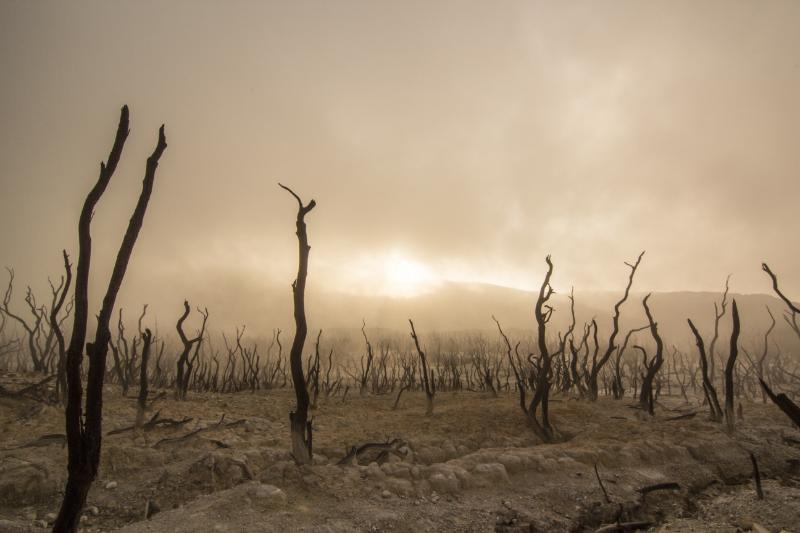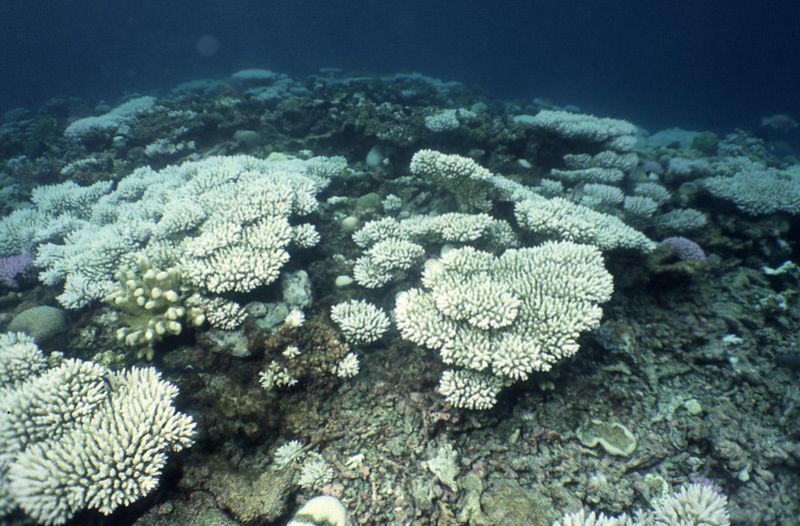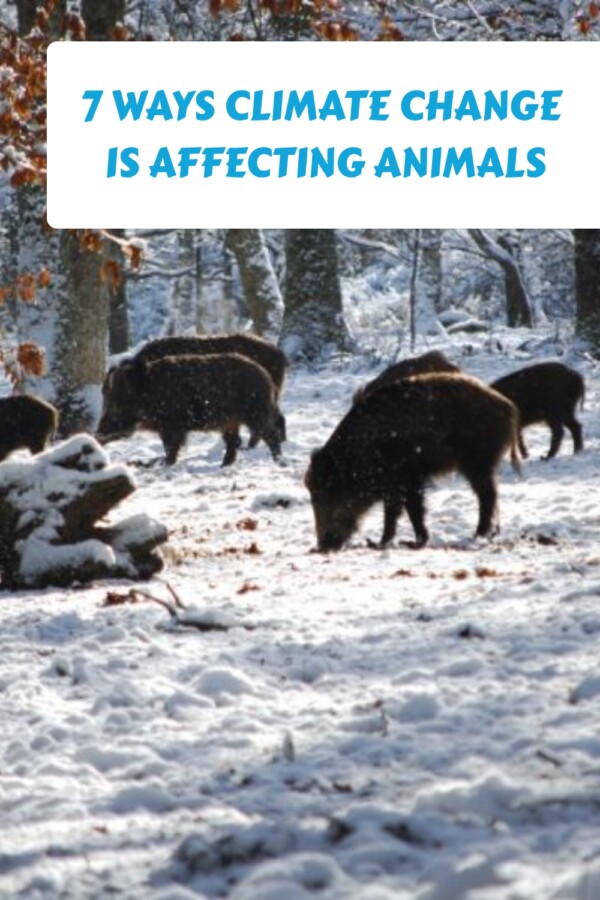Climate change is one of the most pressing global issues of our time. Its effects are being felt across the world, including in the natural habitats of countless animals. Climate change affecting animals is a serious concern to put in the spotlight!
Wildlife faces new and daunting challenges from the Arctic to the Amazon rainforest as the Earth’s climate shifts. It shows alteration in migration patterns and disruption of food chains. Climate change is having a profound impact on the world’s wildlife.
Many species struggle to adapt as the planet continues warming and global sea levels rise. And they are facing new and emerging threats. The effects of climate change are felt in tropical rainforests, ocean habitats, and even our backyards.

In this post, we will explore the various ways that climate change is affecting animals. And what does it mean for the future of our planet’s biodiversity?
Join us as we delve into the science behind this critical issue. And what serious threats are the animals we call our world home face?
Ways Climate Change is Affecting Animals
1. Rising Temperatures and Invasive Species

Rising temperatures due to global warming affect wildlife and ecosystems. Invasive species are particularly affected, as they cannot adapt to the changing climate.
Experts have observed plants, animals, and even microorganisms migrating o survive. As a result, these species are competing for the same food sources and habitats. They compete alongside native species, further disrupting the delicate balance of our ecosystems.

It significantly affects the animal kingdom and could lead to substantial losses if left unchecked. For invasive species to survive, they must be able to adjust to their new environment. And they must find new food sources that can sustain them in their new habitat.
It is high time we protect our wildlife from the effects of climate change. And we must work together to help invasive species adapt to changing climates before it’s too late.
See Related: Endangered vs Threatened vs Extinct Species
2. Flooding and Loss of Habitats

One of the most significant impacts of climate change is the loss of habitat for many threatened species. As temperatures rise, tropical forests are being destroyed at an alarming rate. And it leaves many species without a place to live.
It is valid for animals that depend on specific habitats, such as sea turtles. They rely on certain types of beaches to lay their eggs. The National Park Service reports that sea turtle nesting beaches are vulnerable to erosion due to rising sea levels.
The National Park Service is working to protect wildlife and their habitats. But the effects of the climate crisis are already being felt. Local communities are also seeing the impacts of these changes on the animals they rely on for food and cultural significance.
The effects of climate change on flooding and the loss of habitats are well documented. Rising global temperatures increased precipitation. And extreme weather events associated with climate change can have a devastating effect on wildlife ecosystems and habitats.
Flooding can cause wetland areas to be destroyed, destroying the nests of birds and other animals, and leading to a lack of habitat and food sources for wildlife.

As the climate warms, this destruction will only increase in severity. It will lead to further loss of habitats that provide food sources for wildlife. The long-term effects of these changes on entire ecosystems will be severe. And habitats will become scarce worldwide due to flooding from extreme weather events.
We must take action now to mitigate the effects of climate change. We must work together before it is too late, and our planet’s wildlife ecosystems and habitats are forever changed.
See Related: Don’t Read This If You Think Climate Change is Fake
3. It Changes Life Cycle Patterns

Climate change is a significant factor that can cause changes in the life cycles of plants and animals. By altering the temperature and amount of precipitation, plants, and animals can be affected differently.
For example, plants may have longer or shorter growing seasons. It means their flowering times may change, affecting when the animal species that pollinate them are available to do so.
Animals may migrate earlier or later than average as temperatures fluctuate due to climate change. They could only catch key food sources if they adjusted their migration timings.
Climate change has a considerable effect on both plant and animal life cycles. And we must understand how this will impact our environment to help protect plants and animals from the effects of climate change.
See Related: How to Utilize Greenhouse Bees for Pollination
4. Habitat fragmentation

Habitat fragmentation is the process of fragmenting a habitat or breaking it into smaller pieces. It occurs through geological processes such as erosion and volcanism. Or it can be caused by human activities like construction, farming, and logging.
Fragmentation disrupts the natural flow of energy and resources in an ecosystem. And it also alters species composition and diversity. It causes an imbalance in the ecological relationships between species. And it leads to decreased population levels and extinction risk for some species.

Fragmentation also affects species’ ability to migrate and adapt to climate change. As habitats become fragmented, more effort is needed to protect them from further disruption. It is because fragmentation can cause irreparable damage on a large scale.
See Related: Habitat Loss Solutions You Need to Know
5. It Destroys Habitats

Habitats are the homes of animals and plants and depend on the climate for survival. Climate change is having a massive impact on habitats worldwide.
Temperatures increase, droughts worsen, and precipitation patterns shift. It causes drastic changes in habitats that animals and plants may be unable to adapt to.
Climate change is destroying habitats. It causes rapid declines in species as animal and plant populations struggle to survive in an unfamiliar environment.
The long-term effects of habitat destruction due to climate change could be catastrophic. And it may cause entire ecosystems to be wiped out if left unaddressed.
We must take action to reduce the impact of climate change on habitats. Or we may risk seeing many of the world’s most precious species disappear forever.
See Related: Ways to Conserve Natural Resources
6. Increased carbon dioxide levels in the atmosphere and acidification of the oceans

Another way that the climate crisis is affecting wildlife is through increased carbon dioxide levels in the atmosphere. The increase in CO2 is causing the planet to warm and leading to the acidification of the oceans.
It is a significant problem for marine life, particularly for shell-building species. For example, mollusks and crustaceans are becoming more vulnerable to predators.
Ocean acidification is a growing problem affecting marine life and coral reefs worldwide. It is caused by the increased absorption of carbon dioxide (CO2) from the atmosphere into the oceans.
And it leads to a decrease in the pH of seawater and makes it more acidic. This change in acidity has a significant impact on the ability of marine species to survive and thrive.

Coral reefs, for example, are susceptible to changes in ocean pH. As the water becomes more acidic, it makes it harder for coral to build and maintain their skeletons, which are made of calcium carbonate. It leads to the loss of coral reefs, which provide critical habitats for many fish and other marine animals.
Ocean acidification is also affecting the ability of some species of fish and shellfish. They can’t build and maintain their shells, which they need to protect themselves from predators. It makes them more vulnerable to predation and can impact entire food webs.
See Related: Are Fish Endangered? What You Need to Know
7. Rising Sea Levels Disrupt the Arctic and its wildlife

The Arctic is one of the most rapidly changing regions of the world. And climate change is having a profound impact on wildlife and ecosystems. As the sea level rise, the Arctic is experiencing melting sea ice, thawing permafrost, melting glaciers, and other changes. And it transforms the landscape and affects the animals that call it home.
Global sea level rise is also contributing to the decline of many species. One of the most visible effects of climate change in the Arctic is sea ice decline. As sea ice melts, it reduces the habitat for animals like polar bears, which rely on the ice to hunt for food.
The decline of sea ice also affects the distribution and populations of other Arctic animals—for example, walruses and seals, which use the ice for breeding, resting, and hunting.

The melting of permafrost is also having significant impacts on the Arctic. As permafrost thaws, it releases methane, potent carbon emissions, into the atmosphere. It contributes to further global warming and also causes the ground to sink. It affects the habitats of caribou and other mammals that depend on the tundra for food and shelter.
See Related: Is Dry Ice Bad for the Environment?
FAQs
What is the biggest threat to wildlife from climate change?
The biggest threat to wildlife from climate change is habitat loss. Higher temperatures and sea levels are causing changes to ecosystems. And it makes it difficult for animals to find new homes and thrive.
Is species extinction a concern due to climate change affecting animal wildlife?
Yes, species extinction is a serious concern due to climate change affecting animal wildlife. The loss of one species can have cascading effects on the entire ecosystem. And the world is facing a mass extinction event.
How is climate change affecting wildlife populations?
Climate change is causing changes in the timing of migration and breeding. It alters habitats and food sources and increases the risk of extinction for many species.
Can we take action to protect wildlife from the effects of the changing climate?
Yes, we can take action to protect wildlife from the effects of climate change. By reducing our carbon footprint and slowing the rate of climate change, we can help to protect habitats and reduce the risk of extinction for many species.
Related Resources:
- Best Solutions to Climate Change
- Coniferous Trees Response to Climate Change and Conservation
- Different Types of Green Energy


